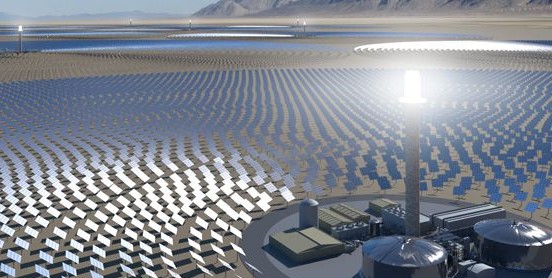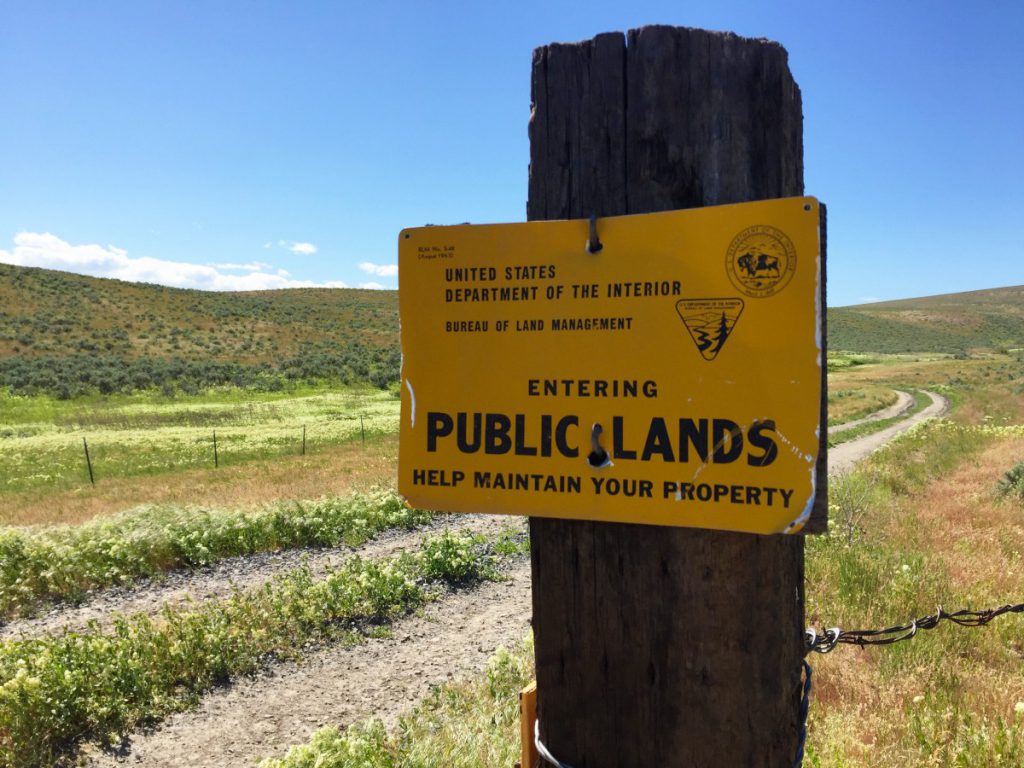The California renewable energy developer had planned to build a $5 billion, 2-gigawatt solar power plant north of Las Vegas using 10 “power towers” that would have used the sun’s energy to super-heat molten salt to produce electricity for 1 million Californians.
Bobby Magill
Gigantic Western Solar ‘Power Tower’ Project Gets Withdrawn
SolarReserve LLC has withdrawn its application to build the world’s largest concentrating solar-thermal power plant on public land in the Nevada desert, according to the Bureau of Land Management.
The California renewable energy developer had planned to build a $5 billion, 2-gigawatt solar power plant north of Las Vegas using 10 “power towers” that would have used the sun’s energy to super-heat molten salt to produce electricity for 1 million Californians.
The project’s federal permit application was withdrawn on Jan. 31, BLM spokesman Derrick Henry said April 15.
The withdrawal effectively halts the federal approval process for the Sandstone Solar Energy Project.
The agency’s website listed the project as pending as of April 15, but when Bloomberg Environment queried the agency about Sandstone’s status, Henry said the site would be updated to reflect the application withdrawal. SolarReserve’s website lists the project as still under development.
SolarReserve didn’t return calls and emails seeking comment.
Mary Grikas, who is listed on the company’s website as SolarReserve’s vice president of global communications, said April 15 that she is no longer with the company and declined to comment about the project.
Contested Planning Process
“SolarReserve did withdraw their existing application for the Sandstone project, but they can still submit a new application for the same project in the future,” Mark Salvo, vice president for landscape conservation at Defenders of Wildlife.
Salvo said BLM officials had told Defenders of Wildlife that the agency denied SolarReserve’s request for an exception to an Interior Department secretarial order requiring project environmental reviews under the National Environmental Policy Act to be limited to one year. Typically the reviews go on for many years.
Free Range Report
Thank you for reading our latest report, but before you go…
Our loyalty is to the truth and to YOU, our readers!
We respect your reading experience, and have refrained from putting up a paywall and obnoxious advertisements, which means that we get by on small donations from people like you. We’re not asking for much, but any amount that you can give goes a long way to securing a better future for the people who make America great.
[paypal_donation_button]
For as little as $1 you can support Free Range Report, and it takes only a moment.




https://www.breitbart.com/politics/2012/09/04/harry-reid-s-son-representing-chinese-solar-panel-plant-in-5-billion-nevada-deal/